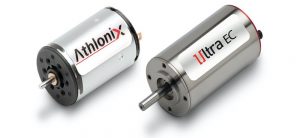Selecting the right motor technology for miniature pumps

Proper motor selection is critical to the efficient operation of miniature pumps in demanding flow or pressure/vacuum tasks. But with the spectrum of applications covering a huge range of different price to performance needs, the design considerations can be complex.
From blood analysers to gas samplers and oxygen concentrators, and from benchtop diagnostic apparatus to lightweight, portable medical devices, there are a multitude of different products that rely on miniature pumps either to move a fluid or to create pressure or a vacuum. While there are many parameters within the overall design of the end product that can be tailored by the choice of pump, or indeed by customising the pump, it is the pump’s motor that is critical to optimising the overall system performance.
Selecting the most appropriate motor to drive these miniature pumps requires the design engineer to focus not only on the key parameters of pressure and flow, but also the often conflicting requirements for lifetime, noise, temperature, current draw, feedback and weight. And balancing all of these performance considerations is, of course, cost.
The design engineer has a number of miniature motor technologies to choose from – including brushed DC motors, brushless DC motors, stepper motors, and the various sub-categories within each one. These different technologies each offer distinct advantages and disadvantages with regard to the basic pump variables. And it is the individual pump application which will dictate the importance of these criteria. So, let’s look at how this guides the design engineer’s decision on the choice of motor.
Flow and pressure
The flow or pressure of a pump is the key driver of the output for the application. Maximising the flow or pressure in the smallest package leads to the optimum end product. The key variables for the motor are the torque and speed, directly affecting the pump flow or pressure. Steppers and DC motors have lower top end speeds than brushless DC motors, but sub-technologies can offer different performance gains. For example, disc magnet steppers can run at higher speeds while slotted brushless DC motors can offer increased torque.
The flow or pressure dictates the working point – the torque requirement at a particular speed. A chemical pump application may require a different flow depending on the specific chemical being pumped. The working point required may cross several motor technologies, so the other requirements of the application are then considered.
Operational lifespan can be a key consideration for the application. Medical products such as oxygen concentrators and anaesthesia machines require the pump to last many hours of operation without degradation in performance, which impacts on the choice of motor. Unlike electronically commutated motors, iron core and coreless motors utilise brushes for communication, which wear over time due to friction and arcing. Motor life is dictated by the material of the brushes used. Options are available to extend the brush life, including precious metal materials. In general, with their layered coil design, coreless motors will last up to four times longer than iron core motors. However, where long life must be assured, design engineers are best served by brushless DC and stepper motors.
Looking beyond commutation, the key point of wear common to all motors is the bearings. Two main types of bearing are available – sleeve and ball. Sleeve bearings have lower force and life ratings (approximately 3,000 hours), but at a lower cost. Ball bearings offer significantly longer life (approximately 20,000 hours) and withstand higher radial and axial loads (typically twice as high as sleeve bearings), making them ideal for demanding applications such as medical therapy systems. The increased life does carry a higher cost, however.
Power consumption
For applications that will be battery driven, power consumption is an important consideration, and the efficiency of the motor is key. Slotless or coreless designs provide the most efficiency, with their unique coil design minimising mechanical losses. Slotted designs, seen in stepper and iron core motors, are the least efficient as the high iron content produces significant electrical losses.
Another advantage of the slotless coil design, as well as from coreless motors, is reduced weight, and this can be a key consideration for portable equipment such as gas analysers.
With the motor selection impacted by so many different parameters, choosing the optimum product can be a challenge, and often trade-offs must be made to satisfy the specific requirements. But armed with the knowledge the advantages and disadvantages of the various technologies, the design engineer can be confident of finding a motor that meets both the performance requirements and price sensitivities of the application.

